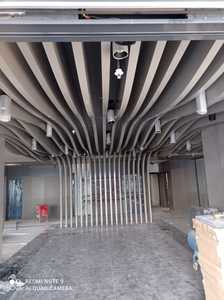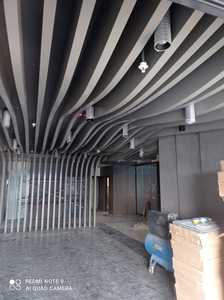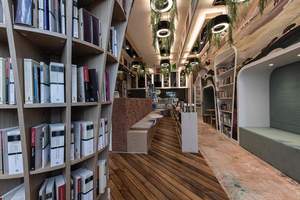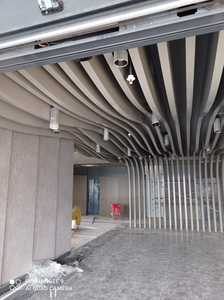(45115 products available)































































































































































































An architecture model is a three-dimensional representation of a building or structure. Models of architecture are made to scale so that the size of the model can be related to the size of the actual building. Models are made in different types for various purposes and can be crafted from different materials.
Architecture models are broadly classified into conceptual models and detailed models. Conceptual models focus on the overall design and form of the structure. They are simple and do not include many details. Detailed models, on the other hand, include many details, such as materials, textures, and colors. They can be used for presentation purposes or to gain a better understanding of the design.
Architecture models can also be classified according to their purpose. For instance, traffic models are used to study the impact of a building on its surroundings, while solar models are used to study how a building will be affected by sunlight. Models can also be classified as physical or digital. Physical models are tangible and can be touched and felt. Digital models are created using computer software and can be manipulated to show different perspectives.
The materials used to make architecture models can also be used to classify the models. Common materials include cardboard, paper, wood, acrylic, and foam core. Each material has its own advantages and disadvantages. For instance, cardboard is inexpensive and easy to work with, but it is not as durable as other materials. Acrylic is more durable than cardboard, but it can be more difficult to work with.
In conclusion, architecture models are representations of buildings or structures. They are made to scale and can be used for different purposes. Models can be classified into different types depending on their purpose, material, and level of detail.
The primary purpose of architecture models is to represent buildings and structures. However, they are used for many other things. Here are some of the key features of architecture models.
Tangible Representation
Architecture models provide a physical representation of a building or structure. This allows people to see and understand the form, space, and relationships between different elements. It is easier to understand concepts and ideas using physical representation rather than drawings or digital images.
Scale
Architecture models are built to scale. This means the model and the actual building or structure are not the same size. However, the model accurately represents the dimensions and proportions of the real building. Scale models help people understand the size and spatial relationships of different elements.
Materials
These models are made with various materials. For instance, foam board, cardboard, acrylic, and wood. The materials used depend on what the model is meant to achieve. Using different materials helps convey the texture and finish of the actual building.
Detailing
Some architecture models include a lot of details. These can be windows, doors, roof details, and landscaping. Such models are useful for presentations. On the other hand, some models have few details. These focus on the overall form and layout instead of the tiny details.
Interactivity
Some architecture models allow for interactivity. For example, the models can be exploded to show how different parts fit together. This helps people understand the construction process and the relationship between different elements.
Lighting
Lighting is an important feature of architecture models. Some models have built-in lights to illuminate key areas. This highlights important features and creates a dramatic effect when presenting the model.
Presentation
Architecture models are used for presentation purposes. They are designed to be visually appealing and communicate the architect's vision. These models can be supplemented with other presentation tools, such as material samples and drawings.
Architecture models are used in various scenarios across the field of architecture, urban planning, and design. Here are some common usage scenarios:
Design and Visualization
Architecture models help architects and designers visualize their concepts and ideas in a tangible way. They serve as a tool for the designers to explore and refine their designs. Additionally, they assist in communicating complex ideas to clients and stakeholders. Furthermore, they enable the architects to present their ideas to clients and stakeholders for a better understanding of the final product.
Presentation and Approval
Architecture models are used for project presentations. They are also used for competitions and public exhibitions. These models can impress clients, juries, and the general public with their craftsmanship and attention to detail. They can also be used to secure project funding by providing a clear and compelling visual representation of the proposed design.
Urban Planning
In urban planning, architecture models can represent entire neighborhoods or cities. This provides a visual framework for understanding the impact of proposed developments on the surrounding environment. Such models facilitate discussions among planners, government officials, and community members about the future of urban areas.
Education and Training
Architecture models are used in academic settings to teach students about design principles, spatial relationships, and materiality. They provide valuable hands-on experience in understanding the complexities of architectural practice. Also, they are used in workshops, seminars, and mentorship programs to enhance learning and skill development.
Construction and Project Management
Detailed architecture models can serve as a guide for builders and contractors during the construction process. They help in resolving potential conflicts and clarify design intent. This ensures that the final built structure aligns with the architect's vision. Moreover, these models can be used to track changes and manage project timelines effectively.
Marketing and Sales
For real estate developers, architecture models can showcase upcoming projects to potential buyers and investors. These models highlight key features, amenities, and the overall lifestyle that the development offers. This creates a compelling marketing narrative that can generate interest and sales before the project is completed.
Cultural and Historical Documentation
Architecture models play a role in preserving and documenting important architectural works. They provide a physical representation of historical buildings and sites that can be studied and appreciated by future generations. Additionally, these models can capture the essence of culturally significant structures, contributing to their memory and understanding.
When purchasing model architecture for resale, it is important to consider a few things to ensure the models will be a hit with customers. Some of the things to pay attention to include:
Scale and Size
Models come in different sizes and scales. The scale refers to the ratio between the size of the model and the actual building size. Depending on the customer's need, they can get models in a small scale that show details such as windows and doors or large scale models that are used to show overall design. Business owners should get architecture models in different sizes and scales to cater to various customers' needs.
Materials
Architecture models are made from different materials. Commonly, they are made with paper, plastic or wood. Each material has its advantages and disadvantages. For instance, wooden models are more durable but can be costly compared to paper and plastic. Buyers should look for architecture models made with quality materials to ensure durability.
Detailing
Buyers should get architecture models that have a high level of detail. Models with high detail level offer a better visual representation of the building. Such models may include furniture, landscape features, lighting and other elements that are important. Nonetheless, architecture models with high detail level can be expensive.
Customization
Business owners should look for suppliers who offer customized architecture models. This will enable them to cater to various customers needs. Some customers will prefer models that are customized to meet their specific requirements and expectations.
Presentation
Architecture models are used for presentation purposes. Therefore, buyers should look for models that are appealing and eye catching. To achieve this, business owners can look for models that incorporate lighting and bases that are detailed.
Q1: What are the common types of architecture models?
A1: There are two main types of architecture models: physical and digital models. Physical models are tangible and can be built to scale or in an unstated scale. Digital models are created using architecture model software, and they are often used in presentations and can be printed in 3D.
Q2: How much does an architecture model cost?
A2: The cost of architecture models can vary widely depending on the size, complexity, and level of detail. For simple models, the cost can start at a few hundred dollars. More complex models can cost thousands of dollars. Custom-built models can cost even more.
Q3: What materials are used in architecture models?
A3: Architecture models can be made from different materials. Common materials include foam board, acrylic, paper, cardstock, and wood. The choice of materials depends on the model's purpose and the level of detail required.
Q4: What software is used to create architectural models?
A4: Various software programs are used to create architectural models. Popular ones include AutoCAD, SketchUp, Revit, Rhino, and 3ds Max. These programs offer different tools and features for creating detailed and accurate models.
Q5: Do architecture models come with lighting?
A5: Some architecture models can come with lighting. The lighting can be used to highlight specific areas of the model or to give a better representation of how the building will look in different lighting conditions. Models with lighting are often more impressive and realistic.